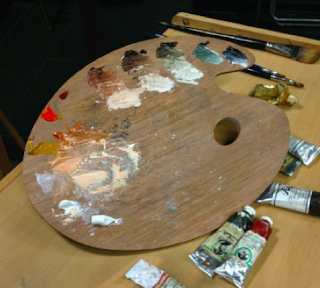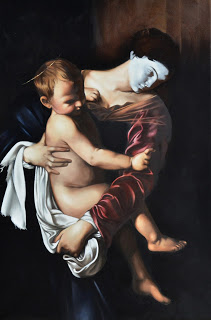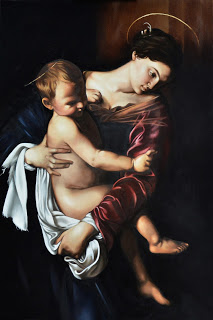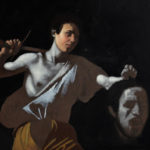As we have seen, Caravaggio developed a system of painting that allowed him to be extremely efficient in the period before his death.
The wash drawing is executed to a high degree of finish. The flesh is under painted with white and drapery is painted directly. Then, when dry, the overpainting of the flesh is started.
Caravaggio’s basic palette included lead white, red
and yellow ocher, lead-tin yellow, vermilion (cinnbar),
malachite, carbon black and earth colors, plus madder
lake and copper resinate glazes.
and yellow ocher, lead-tin yellow, vermilion (cinnbar),
malachite, carbon black and earth colors, plus madder
lake and copper resinate glazes.
I use a variation of a palette invented by John Angel and used at the Angel Academy. I have tried many different palettes and this one is perfect for copying Caravaggio.
From left to right: Lead white, Zecchi roman ochre, Zecchi vermillion, Old Holland persian red, Old Holland red umber, Michael Harding burnt umber, Michael Harding raw umber, Old Holland green umber and ivory black.
The painting is then finished piecemeal. The colours are painted thin but opaque and then blended to a finish.
Copy by workshop student Jacqui Butterworth.
For more info on the Methods of Caravaggio workshop : http://www.angelartschool.com/workshop7_2016.html











